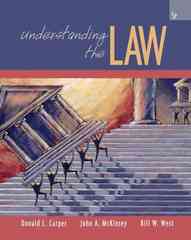Question
In a perfectly competitive market, twenty firms compete for customers. Ten of these firms can produce their output using a technology described by the production
In a perfectly competitive market, twenty firms compete for customers. Ten of these firms can produce their output using a
technology described by the production function q = 2L^(0.5), we call these the "low productivity firms". The other ten firms can
produce their output using a technology described by the production function q = 4L^(0.5). We call these the "high productivity"
firms. Currently, the market price is p = $1.
a) Find the profit maximizing demand for labor of the "low productivity" firms and of the "high productivity" firms.
b) Sum across firms to find the overall demand for labor (hint: keep in mind there are ten firms of each type).
c) Suppose the labor supply is infinitely inelastic (does not depend on the wage rate) at L = 200. Find the equilibrium wage and
the number of workers employed by each type of firm.
d) In two separate diagrams, measuring labor services along the horizontal axis draw production functions and iso-profit lines to
illustrate the firms' profit maximizing use of labor services.
Workers are efficiently allocated across firms when the overall market output is maximized.
e) How many workers should the labor market allocate to "low productivity" firms and to "high productivity" firms to
guarantee efficiency?
Suppose the government imposes a 50% tax on the wages paid by "high productivity" firms but not on the wages paid by "low
productivity" firms. Once the tax is in place, the profit function at "high productivity" firms becomes:
Profit(L) = q(L) - (1 +50%)wL.
f) How does this tax affect the market demand for labor services?
g) How does the tax affect the equilibrium wage?
h) More importantly, how does the tax affect the allocation of workers across the two types of firms?
i) What are the total output consequences of this tax?
j) Suppose the government decided to extend the tax to the wages paid by "low productivity" firms as well. Would efficiency
increase, stay the same or decrease? Justify your answer.
Step by Step Solution
There are 3 Steps involved in it
Step: 1

Get Instant Access to Expert-Tailored Solutions
See step-by-step solutions with expert insights and AI powered tools for academic success
Step: 2

Step: 3

Ace Your Homework with AI
Get the answers you need in no time with our AI-driven, step-by-step assistance
Get Started


